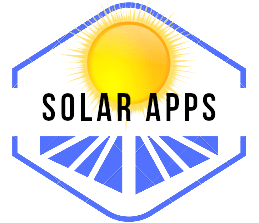Contents
Types of solar inverters
Several types of solar inverters are available, each designed to suit different applications and system sizes. The main types of solar inverters include string inverters, microinverters, central inverters, and hybrid inverters. these types of solar inverters are discussed one by one:
1-String Inverters:
The most common types of solar inverter used in residential and small-scale commercial installations. Several solar panels connect in series to form a string, and the inverter converts the DC electricity. It is produced by the entire string into AC electricity.
Function
Solar energy systems equipped with string inverters. Photovoltaic (PV) panels interconnect using wires and organize into series or groups called ‘strings’. These multiple strings that connected to a single inverter. It is typically located on the side wall, in the garage, or basement. The DC electricity is generated by all the PV panels to the inverter. Which converts it into AC electricity, suitable for powering electrical devices.
Advantages
The implementation of string inverters offers several advantages. Since the inverters were not installed on the roof. They are protected from exposure to harsh weather conditions, making maintenance easier. These inverters are known for their durability and reliable performance, leading to highly efficient energy conversion. Although they provide monitoring at the string level instead of each panel. They accessed remotely to identify any potential issues.
2-Microinverters:
In contrast to string inverters, microinverters are installed directly behind each solar panel. It allows for individual optimization of each panel’s output. These are a types of solar inverters. This design enhances overall system performance, particularly in cases where shading or panel mismatch is an issue.
Function
Micro inverters, classified as module-level power electronics, are affixed to each solar PV panel within the system. These micro-inverters are either mounted on the back of each panel or attached adjacent to it. Each solar panel generates DC electricity from sunlight, which is then directly converted to AC power on the roof. The AC electricity is then sent directly to the switchboard, ready for use to power home appliances. Micro inverters are typically available in sizes ranging from 250W to 1kW, making them suitable for systems consisting of 1 to 4 PV modules.
Advantages
The utilization of micro inverters offers several benefits. Since each solar panel is connected to its dedicated micro inverter, the performance output of each panel is individually optimized. This approach allows for panel-level monitoring, ensuring that if one PV panel experiences shading or reduced performance. It will not adversely affect others. Furthermore, the use of individual inverters for each panel enables. The flexibility to expand the system size and capacity as needed.
3-Central Inverters:
Inverters for solar power plants and commercial use types of solar inverter. They are capable of handling high DC inputs from multiple strings of solar panels. And converting them into AC electricity for distribution to the grid.
Function
Central inverters operate by connecting multiple strings of solar panels to a combiner box or power station. Rather than directly linking them to the inverter. Solar panel DC electricity goes to the power box, then the central inverter converts it to AC power.
Advantages
Central inverters offer several advantages, especially in large-scale installations. Fewer inverters are needed. They can handle multiple strings of panels simultaneously. This centralized approach simplifies maintenance procedures when necessary. Additionally, central inverters can lead to lower costs per kilowatt compared to conventional string inverters. Proven reliability through practical field use.
4-Hybrid Inverters:
Hybrid inverters types of solar inverters integrate with battery storage systems. They allow excess solar energy to be stored in batteries for later use. It enables greater energy independence and resilience during power outages.
Hybrid inverters work
Solar Energy Conversion
Like traditional types of solar inverters, hybrid inverters are responsible for converting the DC electricity generated by solar panels into AC electricity. Used for powering electrical devices. When sunlight hits the solar panels, they produce DC electricity, which is then fed into the hybrid inverter.
Powering Electrical Devices
The AC electricity generated by the hybrid inverter is used to power. The electrical appliances and devices in your home or building. Any extra electricity that is not immediately used is either stored in batteries or fed back to the grid. Depending on the system configuration and grid regulations.
Battery Charging
One of the key features of hybrid inverters is their ability to charge batteries using excess solar energy. When the solar panel produces more electricity than what needs to power. Surplus energy charges batteries.

Battery Discharging
During periods of low solar production or high electricity demand. Such as during the night or peak usage hours, the hybrid inverter allows you to draw energy from the batteries. This ensures a continuous power supply. Even when the solar panels are not producing electricity or when the grid is down.
Grid Interaction
Hybrid inverter designed to work in grid-tied, off-grid, and hybrid configurations. In a grid-tied setup, excess energy can be fed back to the grid. You can earn credits or receive payments from your utility company through net metering. The hybrid inverter ensures that energy demands meet solely, in off-grid setups. Through solar and battery storage, without relying on the utility grid.
System Management
Hybrid inverters come with sophisticated control and management systems that optimize energy flows. And ensure seamless switching between different modes (solar, battery, grid). These systems often include monitoring functionalities, allowing users to track their energy consumption, production, and battery levels in real-time.
Benefits:
- Energy Independence: Hybrid inverters empower both homeowners and businesses to become self-sufficient. By storing any excess solar energy for use during times of low sunlight or power outages.
- Time-of-Use Optimization: Hybrid inverters can help users take advantage of time-of-use electricity pricing. Storing energy when electricity rates are low and using it when rates are high, results in potential cost savings.
- Environmental Impact: By utilizing solar energy and battery storage, hybrid inverters contribute to reducing carbon emissions and promoting a cleaner. And a more sustainable energy future.
